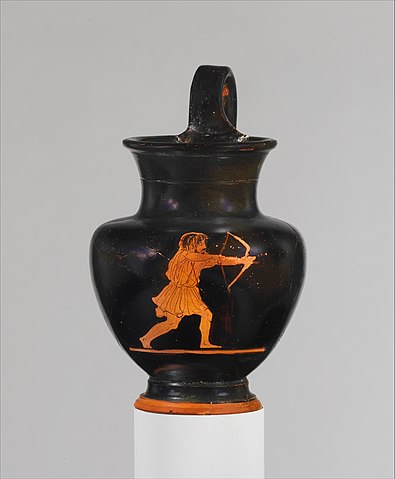
A History Of Archery
To mark Start Archery week in Britain, let’s learn a little about the long and interesting history of the sport.
The First Archers
The earliest evidence of archery comes from the Sibudu Cave in South Africa where rock arrowheads were discovered, dating back to 60,000 B.C. In Spain, cave paintings from 20,000 B.C. depict archers both in battle and hunting have been found, and in Germany pine arrow shafts and flint arrowheads dating back to 12,000 B.C. were discovered in the Ahrensburg Valley, just north of Hamburg. The earliest examples of bow were discovered in a swamp near Holmegaard, Denmark in the 1940s. The bows, which date between 20,000 and 9,500 B.C., were constructed of a single piece of elm and measure 1.5 meters. Archaeological examples of archery have been discovered wherever humans have been found to settle. To begin with, archery was largely used for hunting, but as ancient communities and civilisations began to grow and expand, the bow and arrow became an important weapon of war.
Archery in Battle
Many ancient civilisations, including the Egyptians, Hittites, Persians, Greeks and Romans, used archery both for hunting and in battle. In general, the army with the better bows and arrows most likely took the victory and so the advancement of archery became incredibly important to warfare, leading to the development of different styles across the world. During the Battle of Kadesh in 1274 B.C, fought between the Egyptians and the Hittites, an estimated 5000 chariots were used, with each chariot having an archer on board. The Scythians, who dominated large areas of Eurasia, developed a bow with a distinct curved shape which could be used whilst on horseback. The Huns later improved this bow’s design, reinforcing the tips with bone or horn and developing asymmetrical limbs, and used it to destroy many Germanic and Roman armies in the 3rd century A.D. In the 13th century, the mounted archers of the Mongol armies, under Genghis Khan, were rapidly on their way to establishing the largest empire on land. In Britain, the bow and arrow progressed from being a hunting tool to a weapon following the Battle of Hastings in 1066. The success of the Norman archers in breaching a Saxon shield wall during the battle led to the later development of the English longbow, a weapon which later proved incredibly useful against the French during the 100 Years War, most notably at the Battle of Agincourt in 1415.
Archery For Sport
Archery had proven itself vitally important in warfare for centuries. But the invention of firearms in the 1500s sparked a decline in its use in battle. Despite this, archery experienced a revival during the 18th century as the upper-classes took up the bow and arrow as a form of recreation. Soon, numerous societies were established across the world to allow people to continue to partake and compete in the sport. In the UK, the first Grand National Archery Society meeting was held in York in 1844, and the National Archery Association was established in the USA in 1879. Archery became an official Olympic event at the Paris Olympics in 1900, and in 1904 it became one of the first Olympic events to allow women to compete. After the 1920 Olympics, it was dropped as an event due to a lack of consistency of rules, but in 1931 the Fédération Internationale de Tir à l’Arc (FITA, now known as the World Archery Association) was formed to establish international rules. Despite this, it wasn’t reintroduced into the Olympic Games Until 1972.
Where To Go For Archery
Whilst archery is hardly used in warfare today, many people choose to pursue it as a hobby. There is a huge variety of shooting styles to choose from, making it one of the most inclusive and accessible sports available. Go to World Archery for more information about its interesting history, and for details of how you could take up the sport for yourself visit Get involved with archery at Archery GB.